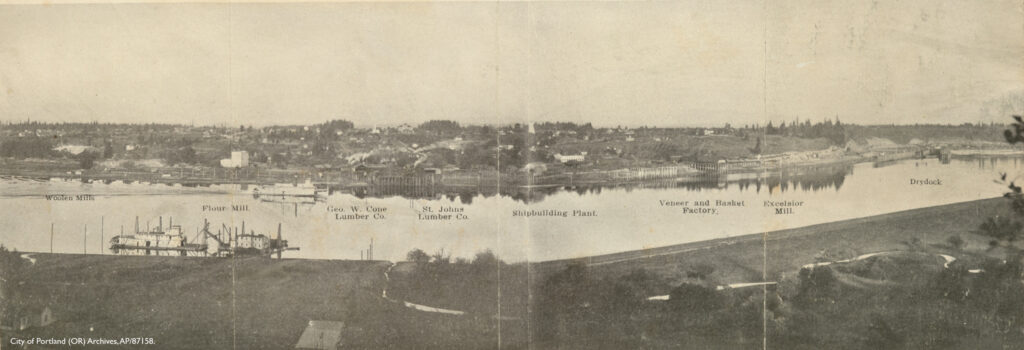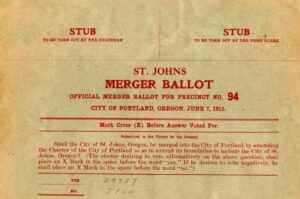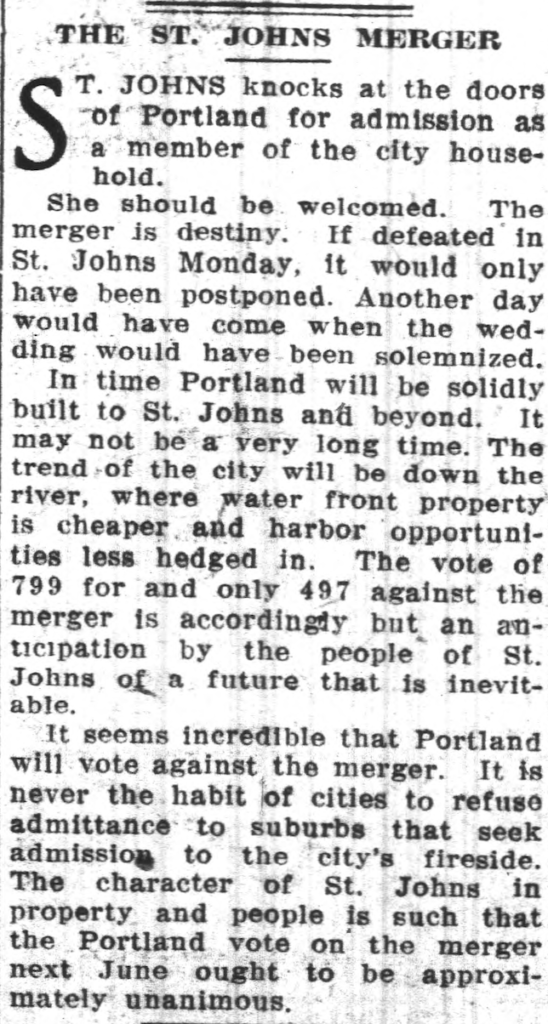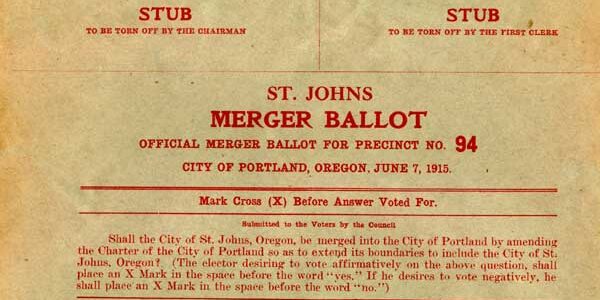Fun Fact #68 Why did St. Johns Seceded from Portland in 1893?

St. Johns seceded from Portland in 1893 because of a combination of higher taxes and unsatisfactory municipal services. The St. Johns-Portland love-hate relationship ramped up in 1891. In February of that year, the unincorporated area of St Johns was annexed by the City of Albina. (The City of Albina had been incorporated in 1887.) In a matter of months, on July 6, 1891, Portland, East Portland, and Albina were consolidated into one city. The relationship “failed” and St. Johns seceded from the City of Portland in 1898 with permission of the Oregon Legislature. And then, on February 19, 1903. St. Johns was incorporated as a city. St. Johns did not have tax base an access to clean drinking water to operate as an independent city. A majority of residents voted for the merger; St. Johns rejoined Portland in 1915. The St. Johns affirmative vote to remerge with occurred in unison with its neighbor across the river, Linnton. The voters approved annexations to Portland, increased the land area Portland’s by twenty-five percent. Once again St Johns expected to benefit from improvements in municipal services by joining Portland proved to be a disappointment. Portland’s increase tax receipts St. Johns businesses residents did not initially enhance the quality of life in St. Johns.

During the first year after incorporation, St. Johns residents continued to pay high prices for well water when they had been enticed to merge with the promised use of the Bull Run watershed. These requirements over inequitable access to the services within the City of Portland continue to be a source for discontent for some St Johns community members.


